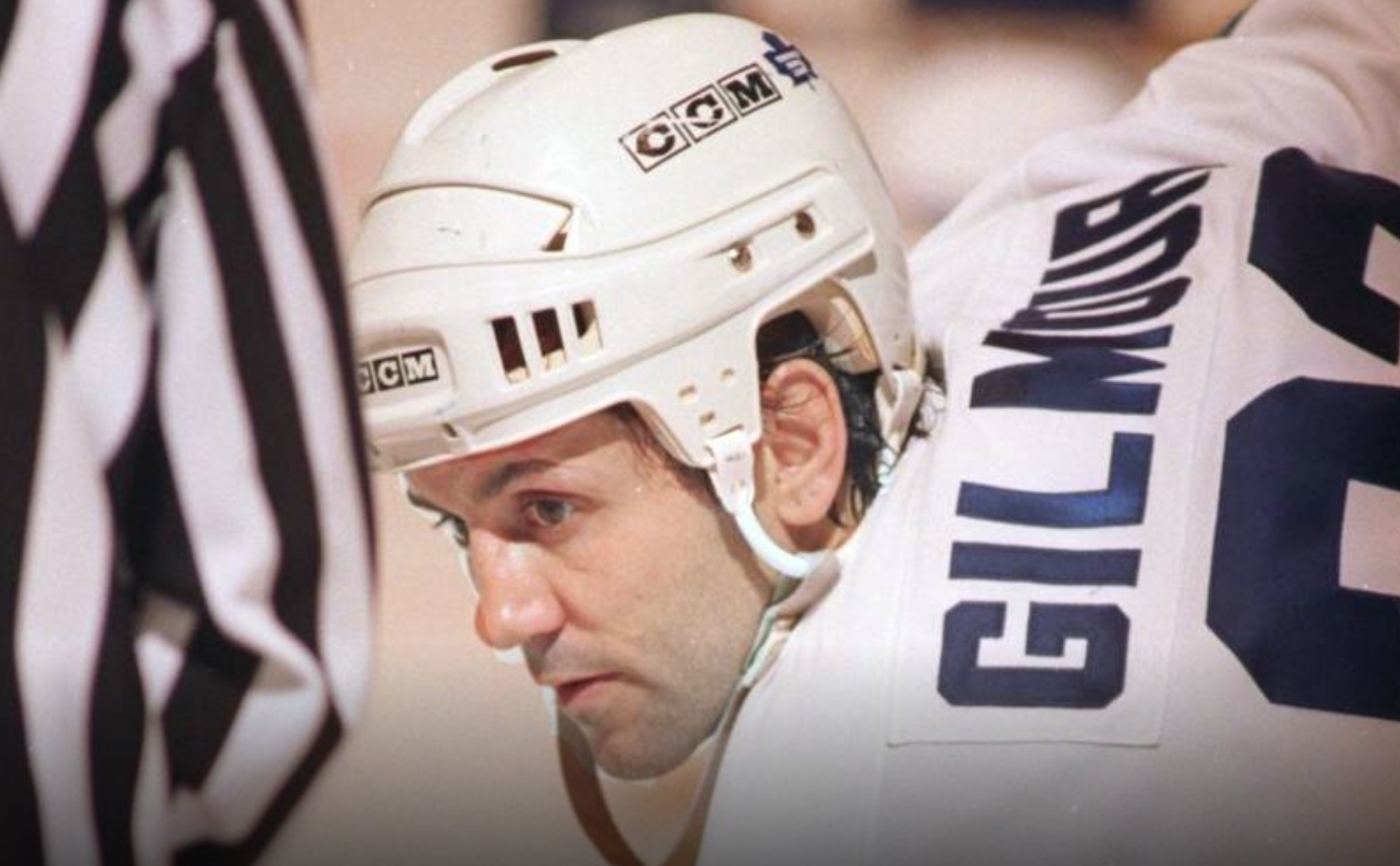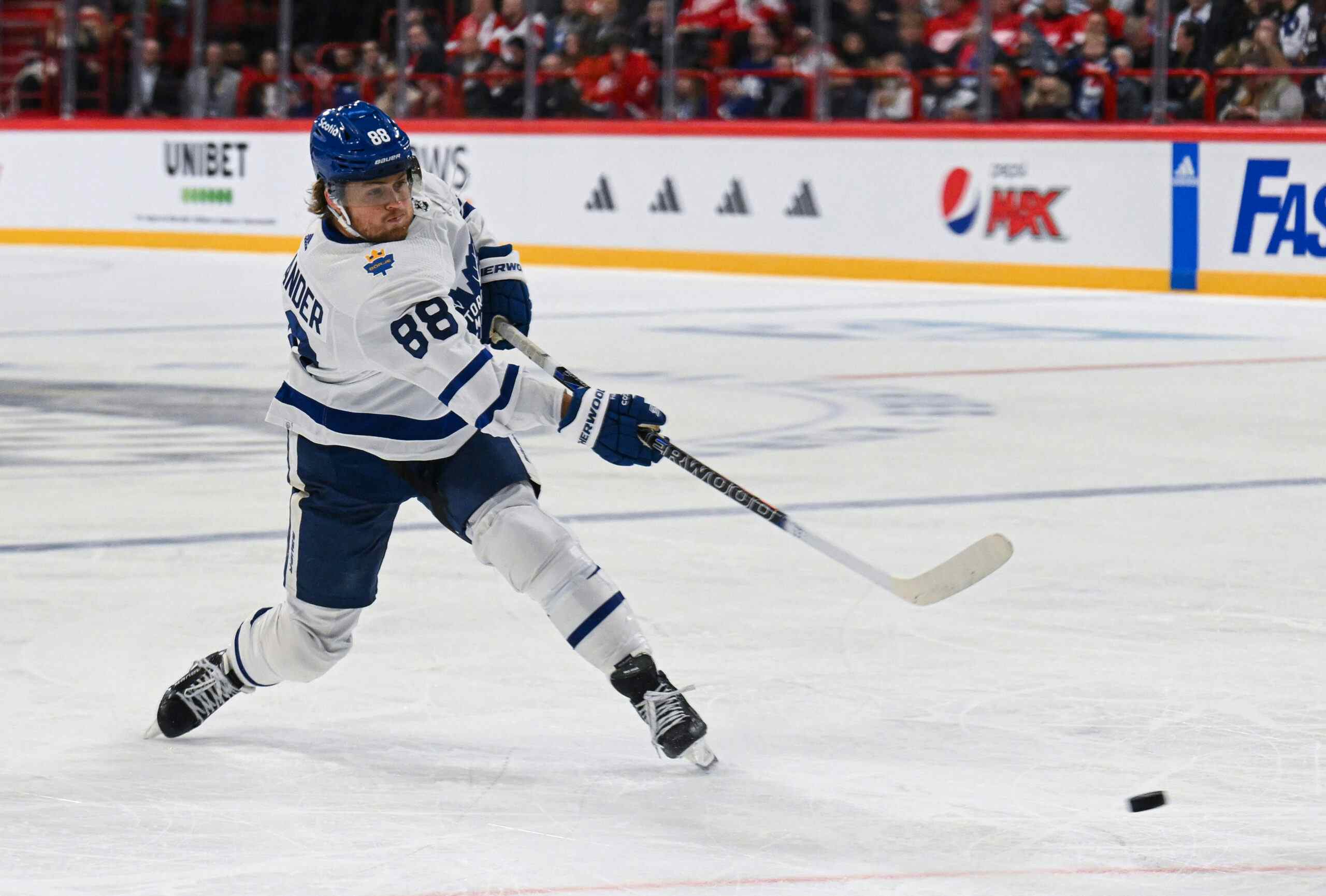Best Leafs Trades Since 1967 Countdown – No. 2: Getting Doug Gilmour from the Flames in a 10-player swap

By Cam Lewis
3 years agoWe’ll pick up where we left off yesterday with the Leafs sitting second-last in the league after a miserable failure of a season in 1990-91.
The Leafs had traded their 1991 first-round pick to New Jersey at the start of the 1989-90 season for defenceman Tom Kurvers. While the deal had helped Toronto reach the playoffs that year, the whole thing came back to bite them as the Leafs tanked in 1990-91.
In order to save themselves the embarrassment of giving New Jersey the first-overall pick and the right to draft Eric Lindros, dubbed as The Next One, Toronto made a deal with the Nordiques, sending Quebec Scott Pearson and two second-round selections in exchange for Lucien DeBlois, Michel Petit, and Aaron Broten.
The deal functioned to make Quebec worse, ensuring that they would finish last and get the top pick. The plan worked and the Nordiques bottomed out and the Leafs subsequently gave New Jersey the third-overall pick, which they used on Scott Niedermayer.
This horrible sequence ultimately pushed general manager Floyd Smith out of his role as general manager. He was replaced by Cliff Fletcher, who had built the Calgary Flames’ Stanley Cup-winning team in 1989. Fletcher joined the Leafs in the summer of 1991 seeking to turn the team into a contender.
He started off with a bang by sending three former top picks, Vincent Damphousse, Luke Richardson, and Scott Thornton to the Edmonton Oilers for two members from their dynasty years that were being sold off, Grant Fuhr and Glenn Anderson, along with young enforcer Craic Berube. As I pointed out a couple of days ago, this trade in the short-term was a bit of a flop as the team missed the playoffs in 1992, but, long-term, it played a key role in two incredible trades that Fletcher made.
One of those trades we’ve already discussed, which was the one that saw Grant Fuhr get shipped to Buffalo in exchange for Dave Andreychuk, Darren Puppa, and a first-round pick. Andreychuk, of course, was instrumental in Toronto’s hot finish to the 1992-93 season and subsequent playoff run. But there’s also another deal that spawned from this Edmonton trade that played a key role in Toronto’s turnaround.
In January of 1992, the Leafs were slogging through yet another miserable season. They had a putrid 10-25-5 record at the turn of the year and didn’t seem to have much of a future. The aforementioned trade with Edmonton had purged the Leafs of a lot of their young talent and there weren’t any reinforcements on the way.
Over in Calgary, Flames’ star Doug Gilmour was ready for a change. After the 1991 season, Gilmour sought to re-negotiate his contract to earn a higher salary. He asked for $1.2 million, the Flames countered with $500,000, and Gilmour anticipated to be awarded $800,000 in arbitration.
Instead, he was awarded $750,000 per season for two years. Gilmour was left bitter afterwards because he believed Flames’ executives tampered with the process. The night before the hearing, the arbitrator had attended a Flames game with management as a guest. Gilmour would play the first half of the season with the Flames but walked out on the team on Jan. 1, 1992.
The next day, Fletcher pulled off a massive, 10-player swap with his former club. The Leafs sent Craig Berube, Alexander Godynyuk, Gary Leeman, Michel Petit, and Jeff Reese to Calgary and the Flames sent Jamie Macoun, Kent Manderville, Ric Nattress, and Rick Wamsley.
Failed to load video.
Okay, there’s a lot going on here, so I’ll break down what Toronto sent to Calgary before addressing what it all meant for the Leafs.
The centrepiece of the deal heading back to Calgary was Gary Leeman, who had become a star in Toronto in the late-80s. He scored 51 goals for the Leafs in 1989-90 but struggled after the team traded away his centreman Ed Olczyk. It had long been rumoured that the two teams were discussing a Gilmour-for-Leeman change-of-scenery swap, but it exploded into this 10-player deal.
Also involved in the blockbuster were two players Toronto had acquired in a couple of the aforementioned ugly trades they had made. Berube came from Edmonton along with Fuhr and Anderson while Petit came from Quebec in that trade that functioned simply to make the Nordiques worse. So, while those trades were poor off the hop, they played a role long-term in turning the Leafs around.
Nobody the Flames acquired would be key players for the team. Here’s what happened to all of them…
- Leeman played 59 games for the Flames before getting shipped to Montreal where he would help the Habs win the 1993 Stanley Cup. The guy the Flames got for Leeman, Brian Skrudland, played 16 games in Calgary before getting claimed by Florida in the 1993 expansion draft.
- Berube played 110 games for the Flames before getting dealt to Washington for a fifth-round pick.
- Petit played 134 games for the Flames before signing with Los Angeles as a free agent.
- Alexander Godynyuk played 33 games for the Flames before also getting claimed by Florida in the 1993 expansion draft.
- Jeff Reese played 39 games with the Flames before getting traded to Hartford for Dan Keczmer, another backup goalie.
So… yeah. Calgary ended up with a big pile of nothing.
From a Toronto perspective, the trade involved sending off five players to acquire five new players in a massive shake-up, but it was really all about getting Gilmour. Before we get into depth about Gilmour’s impact, let’s look at the other four guys in the deal…
- Jamie Macoun lasted the longest in Toronto of any player in this deal. He played 466 games for the Leafs before getting traded to Detroit for a fourth-round pick, which they would use on Alexei Ponikarovsky.
- Ric Nattress would play just one season in Toronto before signing with Philadelphia as a free agent.
- Rick Wamsley played just 11 games in Toronto before retiring in 1993. He would go on to work for the Leafs as a coach and a scout before leaving to become the Blue Jackets’ goaltending coach in 1999.
- Kent Manderville, the only prospect in the deal, played 136 games in Toronto before getting traded to Edmonton for Peter White.
After the trade, Toronto would put up a respectable 20-18-2 the rest of the way, though it wasn’t enough to erase their miserable start and earn a playoff spot. Things would change the following season.
Fletcher had acquired Gilmour when he was the general manager of the Flames in the summer of 1988. Serving as the team’s two-way centre behind Joe Nieuwendyk, Gilmour played a key role in the Flames winning their first-ever Stanley Cup the following season. Fletcher hoped Gilmour could have the same impact in Toronto.
Amazingly, Gilmour was even better in Toronto. In 1992-93, he had the best season of his career, breaking out for 127 points while also winning the Selke Trophy for the league’s best defensive forward. He finished second in Hart Trophy voting behind Mario Lemieux, who had posted a whopping 160 points for the Penguins.
The Leafs would finish the 1992-93 season with a 44-29-11 record, good for third in the Norris Division. They would beat the Red Wings in the first round and the Blues in the second round, highlighted by this iconic double-overtime goal by Gilmour in Game 1.
Failed to load video.
Unfortunately, Toronto’s playoff run would end in Game 7 of the Western Conference Final to Wayne Gretzky and the L.A. Kings. The team would make another deep playoff run in 1994, but, again, it ended in the Conference Final, this time to the surprising Vancouver Canucks.
All told, Gilmour would play 392 games with the Leafs, scoring 131 goals and 452 points, before being traded to New Jersey in 1997. Gilmour came back to Toronto in 2003 for a one-game stint, ironically, played in Calgary, before retiring at the end of the season. Even though his time in Toronto wasn’t long, his number 93 is retired by the team and he’s remembered as one of the best players in franchise history.
In 1991, the Leafs’ main focus was saving themselves the embarrassment of giving New Jersey the first-overall pick. Just two years later, the team came within one win of reaching the Stanley Cup Final. That’s an absolutely incredible turnaround, and Gilmour was the heart of it.

Recent articles from Cam Lewis





